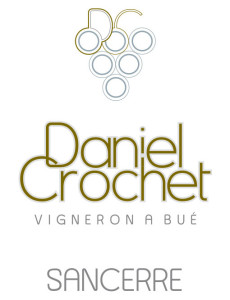
The Estate
This domaine is in its fourth generation; Daniel Crochet took over the family business in 1996 after studying viticulture and oenology at the Lycée Wine Avize in the Marne.
Since 1996, operations have expanded to today where the vineyard covers an area of 9.15 hectares, 5.92 hectares of which are planted with Sauvignon Blanc, and 3.23 hectares with Sauvignon Pinot Noir.
The plots are located in the towns of Sancerre and Bué–all AOC Sancerre. The soils are composed of “terres blanches”, or clay-limestone, and “caillottes”, or pebbly limestone.
Three important viticultural techniques are employed on the estate: ploughing, ENM (the practice of permitting natural grass to grown among the wines), and cultivation of grass between the rows of vines. This alone represents 70% of the property with the aim to preserve soil quality and avoid erosion as well as limiting the yields of the vines in order to obtain the maximum concentration in the grapes. In addition, a conscientious and environmentally responsible program of pest and disease control is practiced throughout the estate.
Sancerre Blanc
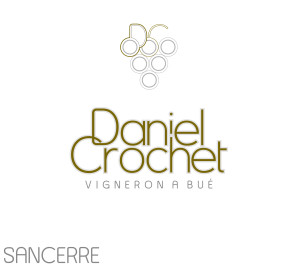
Terroir: “Les Terres blaches” or clay-limestone soils, and “Les caillottes”, very stony and chalky.
Production Area: 5.2 hectares
Grape Variety: 100% Sauvignon Blanc
Average Age of the Vines: 8-45 years old
Growing Method: Guyot simple
Viticulture: The vineyard has been in conversion to certified organic agriculture since 2020.
Harvest: The grapes are harvested manually, sorted, then transported to the presser by conveyer belt.
Vinification: Sequential pneumatic pressing of whole grapes. A static settling of approximately 72 hours is carried out at low temperature. Fermentation in vats between 16-22°C.
Aging: On the fine lees for 6-8 months. Light fining and filtration, then tartaric stabilization. Bottling on the estate.
Tasting Notes: Pale gold color with green reflections. Fresh and fruity on the nose, and a pure expression of the grape varietal on the palate.
Food Pairings: Goat cheeses, white fish, and lighter dishes like carpaccio
Serving Temperature: Serve at 10-12°C when consumed as an aperitif, and 12-14°C with meals.
Sancerre Blanc Cuvée Prestige
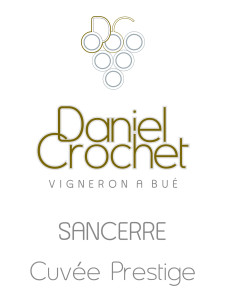
Overview: This cuvee is produced from a blend of 3 different plots of older vines. The plots are situated in the towns of Sancerre and Bué, all AOC Sancerre.
Soil: Pebbly limestone
Production Area: 0.4 hectares
Grape Variety: 100% Sauvignon Blanc
Average Age of the Vines: 41-44 years old
Harvest: The grapes are harvested manually, sorted, then transported to the presser by conveyer belt.
Viticulture: The vines are pruned in simple Guyot. The vineyard is in organic conversion since 2020.
Vinification: Sequential pneumatic pressing of whole grapes. A static settling of approximately 72 hours is carried out at low temperature. Fermentation in vats between 16-22°C with the use of indigenous yeasts.
Aging: On the fine lees for 6-9 months with regular batonnage. Light fining and filtration, then tartaric stabilization. Bottling on the estate.
Tasting Notes: Pale gold color. The full bouquet has pear, citrus, and mineral tones that open instantly. This is a highly aromatic wine with an excellent balance between soft and dry on the palate, and an almost lush finish of white flowers like lilac mixed with ripe white fruit. A bright jewel.
Food Pairings: Scallops, oysters, goat cheese, etc.
Serving Temperature: Serve at 10-12°C when consumed as an aperitif, and 12-14°C with meals.
Sancerre Blanc Plante des Prés
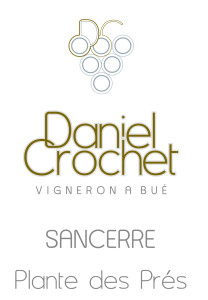
Production Area: 0.27 hectares
Grape Variety: 100% Sauvignon Blanc
Exposition: South
Soil: Very crumbly limestone
First Planting: 1965
Harvest: The harvest is manually done, sorted and transported to the press by conveyor belt (whole bunch pressing).
Viticulture: The vines are pruned in simple Guyot. The vineyard is in organic conversion since 2020.
Vinification: Sequential pneumatic pressing of whole grapes. A static settling of approximately 72 hours is carried out at low temperature. Fermentation in vats between 16-22°C with the use of indigenous yeasts.
Aging: On the fine lees for 8-12 months with regular batonnage. Natural clarification and light filtration. Bottling on the estate.
Tasting Notes: The bouquet is a lovely, delicate prelude to the round notes on the palate. This Sancerre is richly aromatic while having the unique characteristic of being light as a feather without lacking character and depth.
Food Pairings: Oysters, shellfish, white fish, fresh or aged goat cheese.
Serving Temperature: 10-12°C when served as an aperitif, or 12-14°C as accompaniment to a meal.
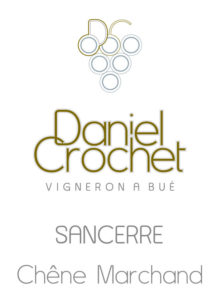
Sancerre Blanc Chêne Marchand
First Planting: 1965
Harvest: The harvest is manually done, sorted and transported to the press by conveyor belt (whole bunch pressing).
Production Area: 0.6 hectares
Grape Variety: 100% Sauvignon Blanc
Exposition: South
Soil: Limestone, called “caillottes”
Viticulture: The vines are pruned in simple Guyot. The vineyard is in organic conversion since 2020.
Vinification: Sequential pneumatic pressing of the whole grapes. A static settling of approximately 72 hours is carried out at low temperature. Fermentation in 600-liter vats at temperatures between 16-22°C. Indigenous yeasts.
Aging: On the lees with regular battonage for a period of 8-12 months depending on the vintage. Natural clarification and light filtration. Bottles on the estate.
Tasting Notes: The pale gold color lends a ripe appearance to this wine. The nose expresses the terroir with a frank purity. The finish is rich with a hint of freshness.
Food Pairings: Shellfish and all kinds of seafood.
Serving Suggestion: Excellent as an aperitif at 10-12 degrees C. When accompanying dinner, the ideal temp is 12-14 degrees C.
Sancerre Rosé
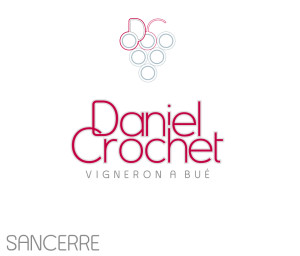
Location: The plots are located in the towns of Sancerre and Bué, all AOC Sancerre.
Production Area: 0.8 hectares
Soil: 2 main types of soil: terres blanches (clay-limestone), and Kimmeridgian marl
Average Age of the Vines: 30-33 years old
Grape Varieties: 100% Pinot Noir
Growing Method: Simple Guyot and Cordon de Royat
Harvest: The grapes are handpicked, then sorted and transported to the press by conveyor belt.
Vinification: The pink color is obtained by sequential pneumatic pressing of the whole Pinot Noir grape bunches. Static settling for about 48 hours is carried out at low temperatures. Fermentation takes place in tank at temperatures between 18-22°C.
Aging: On the fine lies for 3-4 months. Light fining and plate filtration, followed by tartaric stabilization. Bottling on the property.
Tasting Notes: Brilliant pale salmon color. The bouquet is fragrant with aromas of ripe strawberries and raspberries. Beautifully fresh on the palate and perfectly balanced.
Food Pairings: Pairs well with salads, asian cuisine, chicken dishes, etc.
Serving Temperature: 10°C when served as an aperitif, and 12°C when served with a meal.
Sancerre Rouge
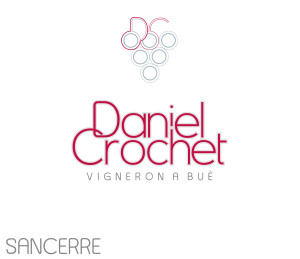
Terroir: The terroir is composed of two main types of soil: terres blanches (clay-limestone), and Kimmeridgian marl
Production Area: 2 hectares
Grape Variety: 100% Pinot Noir
Average Age of the Vines: 17-43 years old
Growing Method: Guyot simple or Cordon de Royat
Viticulture: The vineyard has been in conversion to certified organic agriculture since 2020.
Harvest: The harvest is hand-picked, sorted, and bunched (total or partial depending on the vintage) before being put in the tank.
Vinification: Cold maceration for 6-14 days, then fermentation with the use of indigenous yeasts at a temperature of 16-26°C. Pumping over and light punching down during this period. The vatting lasts for a period of 18-30 days. The press juices are incorporated into the free-run juices, or they are vinified separately. 60% of the juices are put directly into barrels and 500 liter barrels, 40% in wooden vats in order to carry out the malolactic fermentation.
Aging: Maturation in barrels for about 12 months, then placed in concrete tanks for a period of 4-6 months. Bottling on the estate.
Tasting Notes: Vibrant, purplish red color. The nose expresses seductive notes of red berries, such as raspberry and sour cherry. Beautiful structure on the palate.
Food Pairings: Pairs well with beef, veal, and mutton dishes.
Serving Temperature: 12-14°C
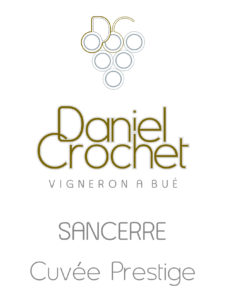
Sancerre Rouge Cuvée Prestige
Location: Situated in the towns of Sancerre and Bué, all AOC Sancerre.
Production Area: 0.4 hectares
Age of Vines: 41-47 years old
Soil: Clay-limestone, Kimmeridgian marl
Grape Varieties: 100% Pinot Noir
Training System: Guyot simple or Cordon de Royat
Harvest: Manually done, sorted and destemmed (completely or partially, depending on the vintage). This cuvee is produced from old vines.
Vinification: Cold maceration for 5-8 days, then the fermentations begin at a temperature of 22-26°C, using indigenous yeasts. Light remontage and pigéage take place during this time. Fermentation lasts for 18-30 days. The press juice is vinified separately, then blended with the free-run juice, after which it is placed in barrels (new wood every 3 vintages)and 500-liter casks to encourage malolactic fermentation. Aging lasts about 12 months. The wine is then transferred into concrete tanks for 4-6 months. Bottling on premise.
Tasting Notes: Deep red color with shades of violet. The nose is complex and precise, offering aromas of ripened blueberries and blackberries. On the palate, this wine is powerful, with ripe tannins. The fruity aromas are reflected on the palate, combined with a lovely woody note.
Serving Temperature: 12-14°C, either enjoyed on its own or accompanying a meal
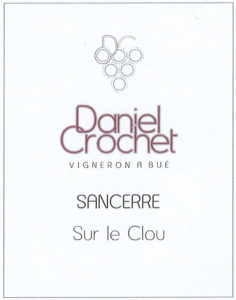
Sancerre Rouge Sur Le Clou
Production Area: 0.15 hectares
Soil: Marl sediments dating from the Jurassic period, locally called “Marnes de Saint-Doulchard”. Subsoil of limestone.
Grape Variety: 100% Pinot Noir
Average Age of the Vines: 45 years old
Viticulture: The vineyard has been certified organic since 2023.
Pruning Method: Guyot simple.
Harvest: Manually done. The grapes are sorted then vatted in whole bunches.
Vinification: No added sulfites. Cold maceration for 6-10 days before fermentation starts. Only indigenous yeasts are used. No remontage or pigeage, only infusion. Vatting period lasts 18-30 days. The “jus de presse” is incorporated into the “jus de goutte”. The juice blend is placed directly into barrels that have been used 3-5 times and malolactic fermentation proceeds.
Aging: About 12 months in barrels. Restocking in vats for 4 to 6 months. No fining, filtration, or tartaric stabilization. Bottling on the estate.
Tasting Notes: Complex nose of floral, spiced, and intense red fruit notes. Crisp and fresh yet lingering on the palate.
Food Pairings: Goes well with duck or other wild fowl.
Serving Temperature: 12-14°C


